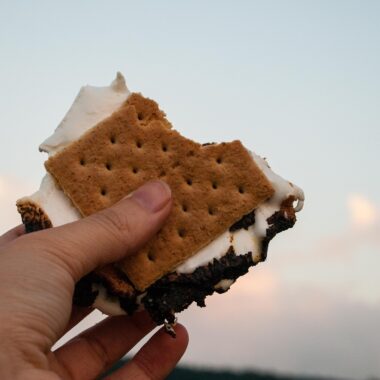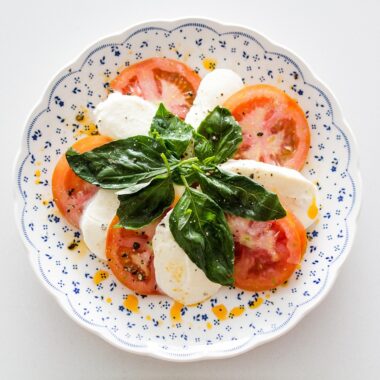Dongchimi (동치미) is a classic Korean water kimchi made with radish, water, and seasonings, creating a refreshing and mildly tangy dish. Unlike spicy kimchi, dongchimi is not heavily seasoned with gochugaru (red pepper powder), making it a perfect accompaniment to warm rice or Korean noodles. This fermented dish is known for its crisp texture, slightly sweet and salty brine, and its cooling effect, making it particularly popular in the winter.
This article will provide a comprehensive guide to making traditional dongchimi at home, including its history, ingredients, step-by-step preparation, and tips for perfecting its taste.
History of Dongchimi
Dongchimi has been a staple in Korean households for centuries, often made during the late autumn and early winter when radishes are at their peak. Historically, Koreans would prepare large batches and store them in onggi (traditional earthenware pots) buried underground to maintain a consistent temperature for fermentation. Dongchimi is a winter favorite because it is refreshing and pairs well with heavier winter dishes.
This particular variety of kimchi is milder than napa cabbage kimchi, which is spicy and robust. The fermentation process of dongchimi results in a lightly tangy and carbonated brine, making it a popular base for cold noodle soups like dongchimi guksu (동치미 국수).
Ingredients for Traditional Dongchimi
To make authentic dongchimi, you will need the following ingredients:
Main Ingredients
- Korean radish (mu, 무) – 2 large radishes (about 3 lbs)
- Green onions – 4 stalks
- Korean pear – 1, peeled and sliced
- Garlic cloves – 6-8, whole
- Ginger – 1-inch piece, sliced
- Korean red chili peppers (optional) – 2, whole (for mild heat)
- Sea salt – 1/4 cup (adjust to taste)
Brine Ingredients
- Filtered water – 8-10 cups
- Sugar – 1 tbsp (optional, for mild sweetness)
- Coarse sea salt – 2 tbsp
- Rice flour slurry (optional, for faster fermentation)
- Rice flour – 1 tbsp
- Water – 1/2 cup
Step-by-Step Dongchimi Recipe
Step 1: Prepare the Radish
- Wash the radishes thoroughly and remove any dirt from the skin. Peel them lightly, if desired.
- Cut the radishes into large chunks or thick matchsticks. If you prefer a more traditional look, cut them into rounds or small blocks.
- Sprinkle 1/4 cup of sea salt over the radish pieces, tossing them to coat evenly.
- Let the radish sit for 1-2 hours to release excess moisture. This helps improve the texture and flavor absorption.
Step 2: Prepare the Other Ingredients
- Slice the Korean pear into thin wedges. The pear adds a natural sweetness to the dongchimi.
- Slice the ginger into thin rounds.
- Peel the garlic cloves and keep them whole.
- Cut the green onions into 2-inch sections.
- If using Korean red chili peppers, keep them whole for a mild heat.
Step 3: Make the Brine
- In a mixing bowl, dissolve 2 tablespoons of sea salt in 8-10 cups of filtered water.
- If using a rice flour slurry, cook 1 tablespoon of rice flour with 1/2 cup of water over low heat until thickened. Let it cool before adding to the brine. This step is optional but helps fermentation.
- Add 1 tablespoon of sugar for mild sweetness, adjusting to taste.
Step 4: Assemble the Dongchimi
- Rinse the salted radish pieces lightly to remove excess salt.
- In a clean glass jar or fermentation container, layer the radish pieces with pear slices, garlic, ginger, and green onions.
- Pour the prepared brine over the radish mixture, ensuring all ingredients are submerged.
- Place a heavy object (such as a clean stone or fermentation weight) on top to keep the vegetables submerged.
- Close the jar loosely to allow gases to escape during fermentation.
Step 5: Fermenting the Dongchimi
- Store the jar at room temperature (65-75°F / 18-24°C) for 2-3 days for initial fermentation.
- After bubbling starts (a sign of fermentation), transfer the jar to the refrigerator to slow down the process.
- Let it ferment in the fridge for at least 1-2 weeks for the best flavor.
How to Serve Dongchimi
Once the fermentation is complete, you can enjoy dongchimi in various ways:
- As a Side Dish: Serve chilled dongchimi alongside Korean BBQ, rice, or stews.
- Dongchimi Guksu (Cold Noodle Soup): Use the flavorful brine as a base for cold noodle dishes, garnished with julienned cucumbers, radish slices, and boiled eggs.
- As a Palate Cleanser: Dongchimi’s refreshing taste helps cleanse the palate between rich dishes.
Storage and Fermentation Tips
- Keep the radish submerged: To prevent mold, ensure all ingredients stay below the brine level.
- Use clean utensils: Always use clean, dry utensils when handling dongchimi to prevent contamination.
- Adjust the salt level: If the brine tastes too salty, add more filtered water; if too bland, add more salt.
- Monitor fermentation: If the brine turns too sour, it’s over-fermented. Use it for cooking rather than discarding it.
Health Benefits of Dongchimi
Dongchimi is not only delicious but also offers several health benefits:
- Probiotic-Rich: Like other fermented foods, dongchimi contains probiotics that support gut health.
- Low in Calories: Since it’s made with radish and water, dongchimi is a light, low-calorie dish.
- Hydrating and Refreshing: The brine provides electrolytes, making it an excellent choice for hydration.
- Aids Digestion: Fermented foods help digestion and improve gut microbiome balance.
- Boosts Immunity: The garlic and ginger in dongchimi contribute to immune-boosting properties.
Variations of Dongchimi
1. Spicy Dongchimi
- Add 1-2 tablespoons of gochugaru (Korean red pepper flakes) for a spicier version.
2. Quick Dongchimi (Geotjeori Style)
- Instead of fermenting, mix all ingredients and let them sit for 6-12 hours before serving.
3. Fruity Dongchimi
- Add extra fruits like apple, jujube, or persimmon to enhance sweetness.
4. Dongchimi with Mustard Greens
- Some regions in Korea add mustard greens for extra flavor and bite.
Frequently Asked Questions (FAQs)
1. Can I use daikon instead of Korean radish?
Yes, but Korean radish (mu) has a firmer texture and sweeter taste, which makes a better dongchimi.
2. How long does dongchimi last?
Properly stored in the fridge, dongchimi can last 3-4 months.
3. Why does my dongchimi taste too sour?
Over-fermentation causes sourness. To fix it, dilute the brine with fresh salted water or use it as a soup base.
4. Can I reuse the brine?
Yes, you can reuse the brine for a new batch by adding fresh radish and adjusting the seasoning.
Conclusion
Dongchimi is a fantastic, easy-to-make Korean water kimchi that brings refreshing, probiotic-rich goodness to your meals. Whether enjoyed as a side dish, a noodle soup base, or a healthy snack, its crisp radish and tangy, slightly sweet brine make it a favorite among Korean cuisine lovers.
Try making dongchimi at home and experience its unique flavor that perfectly balances tradition and refreshment! Happy fermenting! 🍜🥒


















